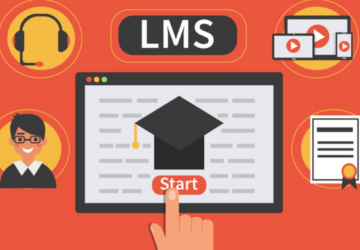Nonprofit organizations look for creative ways to reach a wider audience and have a significant social impact and online advocacy plays a major role in such work. These organizations can inspire, inform, and engage people globally, through the power of social media. Read on to learn about the methods nonprofits can use to develop online advocacy campaigns connecting them with a wide range of audiences, including real time captioning, inclusive language, and more.
The Impact of Online Advocacy
Online advocacy means using digital platforms to raise awareness, mobilize supporters, and advocate for social, environmental, or political causes, allowing nonprofits to amplify their message and connect with individuals who share their values. Here are some key ways in which online advocacy benefits nonprofit organizations:
Reach and Accessibility: The internet knows no geographic boundaries. Nonprofits can reach a global audience with their advocacy efforts, making it possible to connect with supporters from different backgrounds and locations.
Cost-Effectiveness: Traditional advocacy methods often require substantial financial resources. Nonprofit organizations look to have a significant global impact. Conversely, online advocacy can be affordable, making it available to smaller nonprofits with tighter budgets.
Engagement and Interaction: Nonprofits can interact with supporters via direct messages, shares, likes, and comments on online platforms. Supporters develop a sense of commitment and community as a result of this two-way communication.
Data and Analytics: Nonprofits can monitor the success of their advocacy campaigns by utilizing data and analytics.
Strategies for Inclusive Online Advocacy
To create inclusive online advocacy campaigns, nonprofits should adopt a strategic approach that embraces diversity and accessibility. Here are some effective strategies to consider:
Understand Your Audience: Begin by researching and understanding your target audience. Recognize that your supporters come from diverse backgrounds, and tailor your messaging to resonate with various demographics.
Use Inclusive Language: Employ inclusive language that reflects diversity and avoids stereotypes. Ensure that your content is accessible to individuals with different abilities, including those with disabilities.
Cultural Sensitivity: Be sensitive to cultural differences and nuances. Respect and acknowledge various cultural perspectives to avoid unintentionally alienating potential supporters.
Collaborate with Diverse Voices: Partner with individuals and organizations that represent different communities and backgrounds. Collaboration can help broaden your reach and bring fresh perspectives to your advocacy efforts.
Accessibility Features: Make your online content accessible to all. This includes providing alternative text for images, closed captions for videos, and ensuring that your website is designed with accessibility in mind.
Enhancing Accessibility With CART Services
One remarkable tool that nonprofits can utilize to enhance the inclusivity of their online advocacy campaigns is Communication Access Real-Time Translation (CART) services, particularly real time captioning. It involves transcribing spoken words into text in real time, making content accessible to individuals who are deaf or hard of hearing.
Here’s how nonprofits can benefit from using CART services:
Broadening Audience Reach: By providing real-time captions for videos, live streams, and webinars, nonprofits can make their content accessible to a wider audience, including individuals who rely on captions to understand spoken content.
Enhancing Engagement: Captions not only benefit those with hearing disabilities but also individuals who prefer to watch videos with the sound off or in noisy environments. This can lead to higher engagement with your content.
Legal Compliance: Many countries have legal requirements for accessibility, and providing real-time captions can help nonprofits ensure compliance with accessibility regulations.
Demonstrating Commitment to Inclusivity: Using CART services demonstrates a commitment to inclusivity and sends a powerful message about your organization’s dedication to serving all members of the community.
The Bottom Line
With online advocacy as a fundamental part of their mission, nonprofits can increase the impact of their work. Organizations that want to succeed need to use tactics that support accessibility, diversity, and inclusivity. One effective strategy to make sure your online advocacy campaigns reach a larger and more diverse audience is to make use of CART services. By creating a welcoming and accessible online presence, nonprofits can inspire and mobilize supporters from all walks of life, ultimately driving positive change for the causes they champion.








